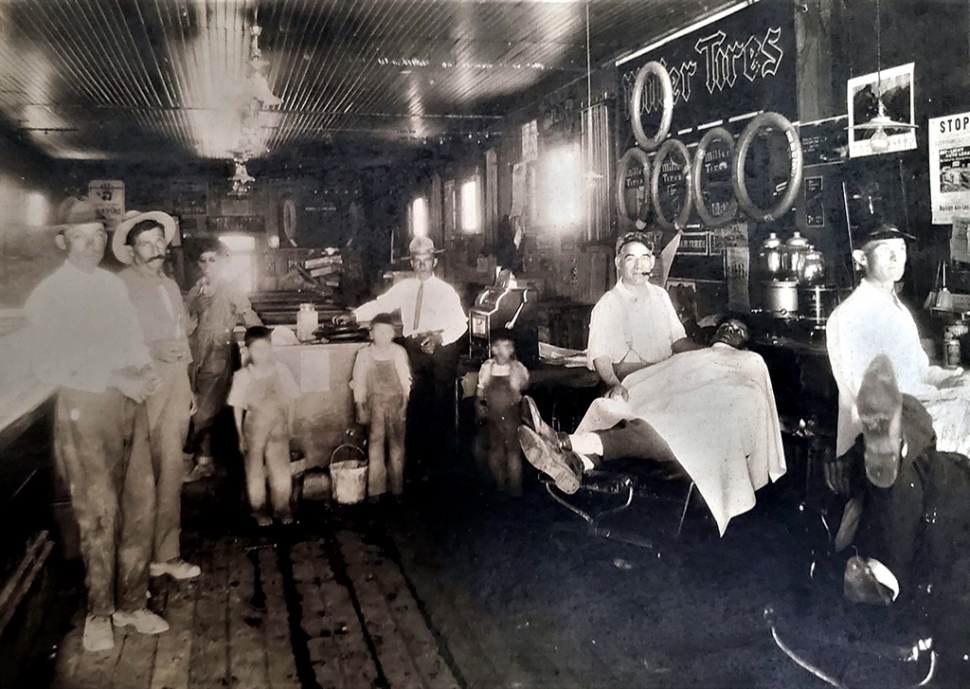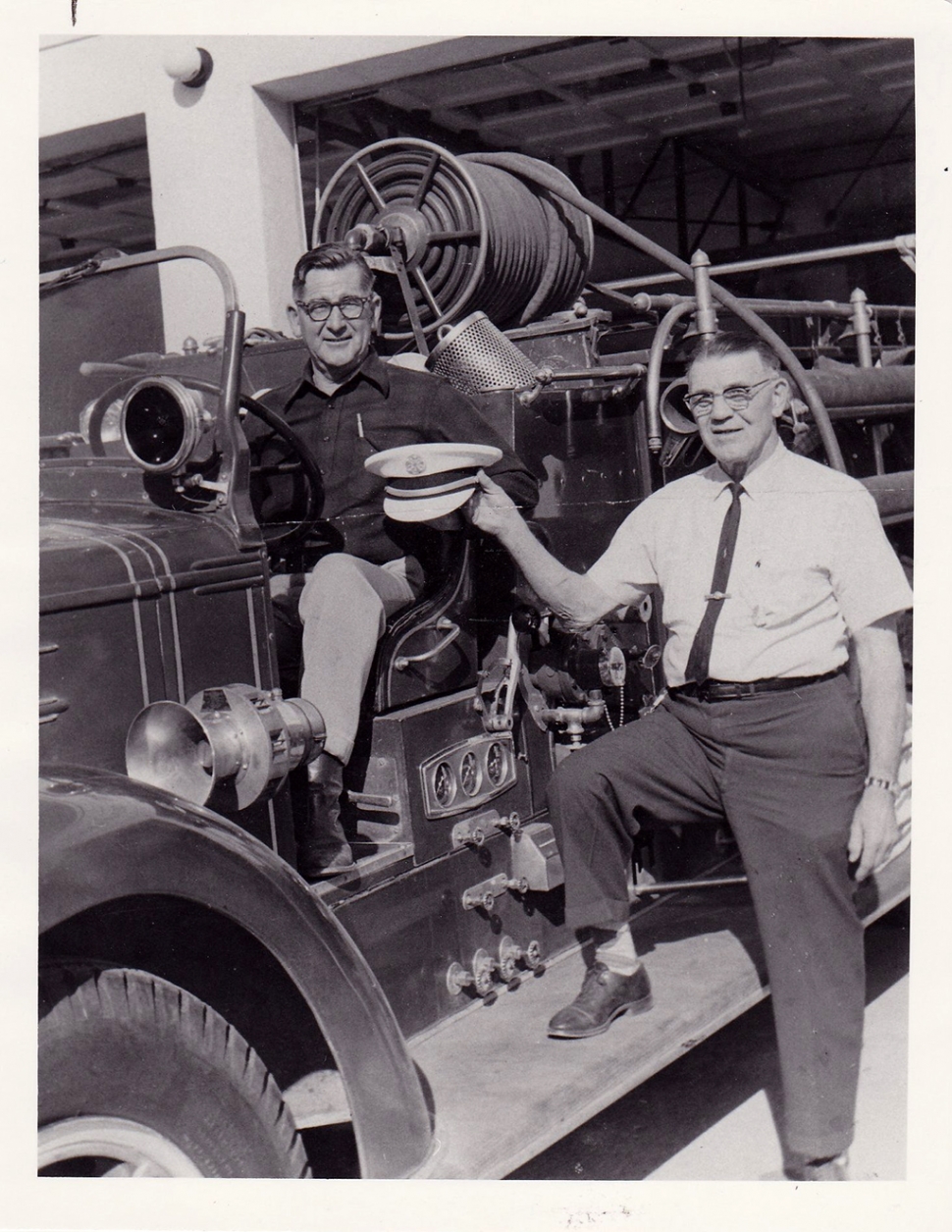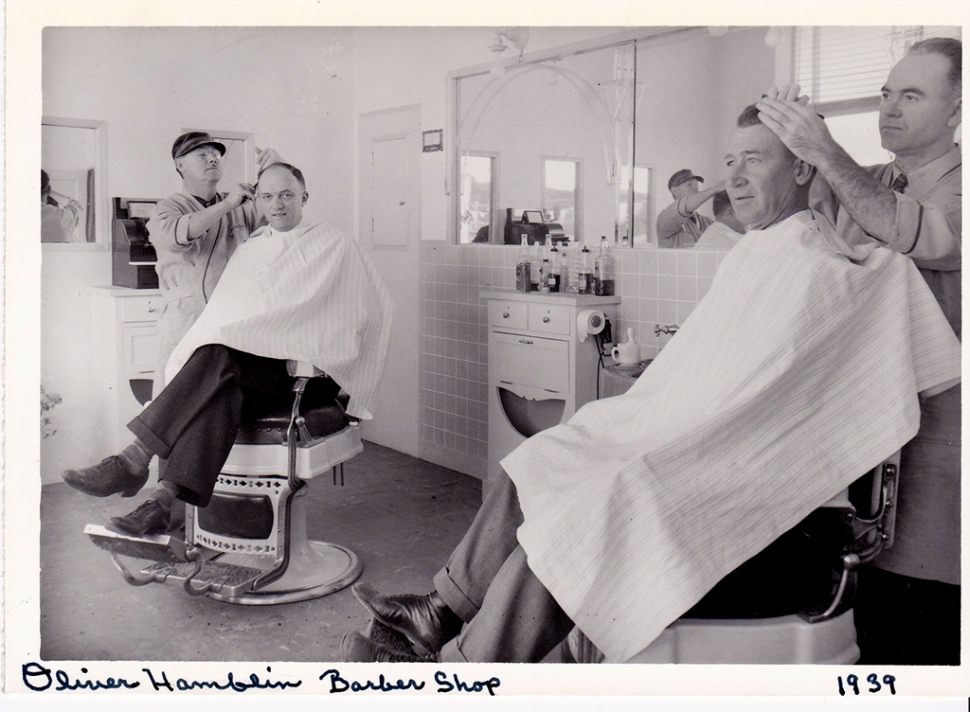|
Barbershops of Fillmore & Piru
 Belty’s Pool Hall and Barbershop, owned by R.O. Betly who in 1930 claimed to be the oldest business in Piru. Belty’s had three pool tables, two barbershops and sold candy, cigars, hair tonics, etc. Photos credit Fillmore Historical Museum. By Gazette Staff Writers — Thursday, September 1st, 2022
 Fillmore’s George Palmer handing over the Fire Chief ’s hat to Oscar DeFever. Palmer was appointed assistant fire chief in 1940 and was elevated to city fire chief – a position he held until 1964.  Oliver Hamblin's barbershop in 1939. Courtesy Fillmore Historical Museum Barbershops began far back in antiquity. They became especially popular in the United States in the 19th century. They were not just a place for men to go for a shave and a haircut; they were a place for socializing, debating current issues and entertainment. The first barber we can find a record of in Fillmore was C. P. Allen who was listed in the 1898 county directory. No address was given – Fillmore was small enough that addresses weren’t required. Undoubtedly there were barbers in Fillmore before 1898, the well-groomed men of the community would require one. Piru’s first barber may have been R. O. Belty who claimed in 1930 that his was then the oldest business in Piru. His was not only a barbershop but also a pool hall. By 1930 he had two barbershops, three pool tables and sold various dry goods. If you go by a picture of his establishment, he also sold tires. Piru News in March of 1927 reported that Green’s Barber Shop had installed a player piano with “very pleasing tone.” Thomas H. Green owned the Ideal Billard Parlor and Barber Shop on Center Street. For Christmas that year, he raffled off three turkeys. Whenever a customer spent 25₵ at his establishment, the customer would receive a ticket for the drawing. The turkeys were won by Joe Elson of Camulos Ranch, Chet Horton and Officer M. M. Willis. Over the years Fillmore has seen many barbering establishments. One of the longest tenured was George Palmer. He was born in Pittsburgh, Pennsylvania in 1891 and made his way to Fillmore by 1913. He had a shop on Central Avenue which was formerly Pete’s Sanitary Barbershop, next door to Jim’s Pool Hall. Because girls were not allowed in the Pool Hall, they often went into George Palmer’s barber shop where a “Dutch” door opened into the Pool Hall. From that opening they could order cokes or sodas without setting foot in the “forbidden” zone. (See “No Girls Allowed” https://www.fillmorehistoricalmuseum.org/no-girls-allowed). Palmer’s Barber Shop would be open in the morning well before other businesses as would other barbershops in Fillmore. The businessmen and city fathers of the town would need to have a shave and trim before opening their own businesses. George was active in Fillmore life. In 1938 he was appointed assistant fire chief and in 1940 was elevated to city fire chief – a position he held until 1964. He was a member of the Fillmore Club and the local Masonic Temple. George Palmer retired in 1968 and passed away in 1970. His son, Richard “Tulie” Palmer was athletic director at Fillmore High School for many years. George Palmer had competition in town. William Servoss, who was born in New York, had a shop at 368 Central Avenue in Fillmore for 37 years from 1916 until the 1950s. Oliver Hamblin had his shop at 246 Central Avenue in 1928 and plied his trade for thirty years. William McKinley was a barber in our area for many years. He worked in George Palmer’s shop in 1933, but by 1939 opened his own shop in the Owen Miller Building on Central Avenue. Other shops over the years include Pearson’s Barbershop which was adjacent to the theater in the 1920s and Olin Core’s Barbershop in the 1940s and 50s. “Shave and a haircut, 2 bits” is a phrase from the turn of the 20th Century – now a shave and haircut costs closer to $50 than 25₵. But if a gentleman wants he can still get a lather shave with a straight razor and you can still see a red, white and blue barber pole on Central Avenue. |
